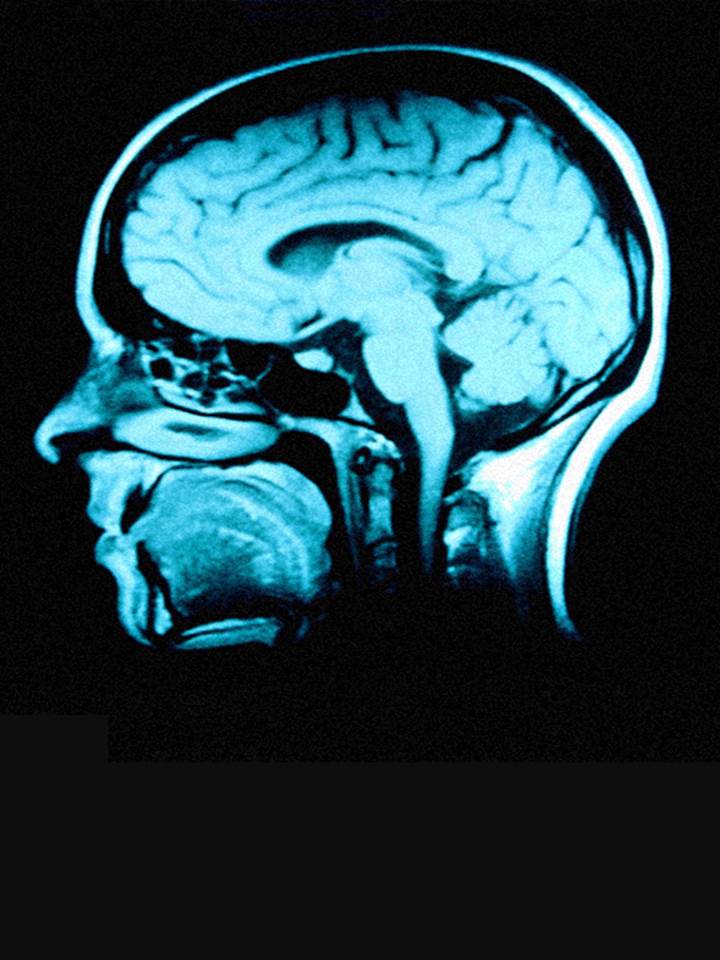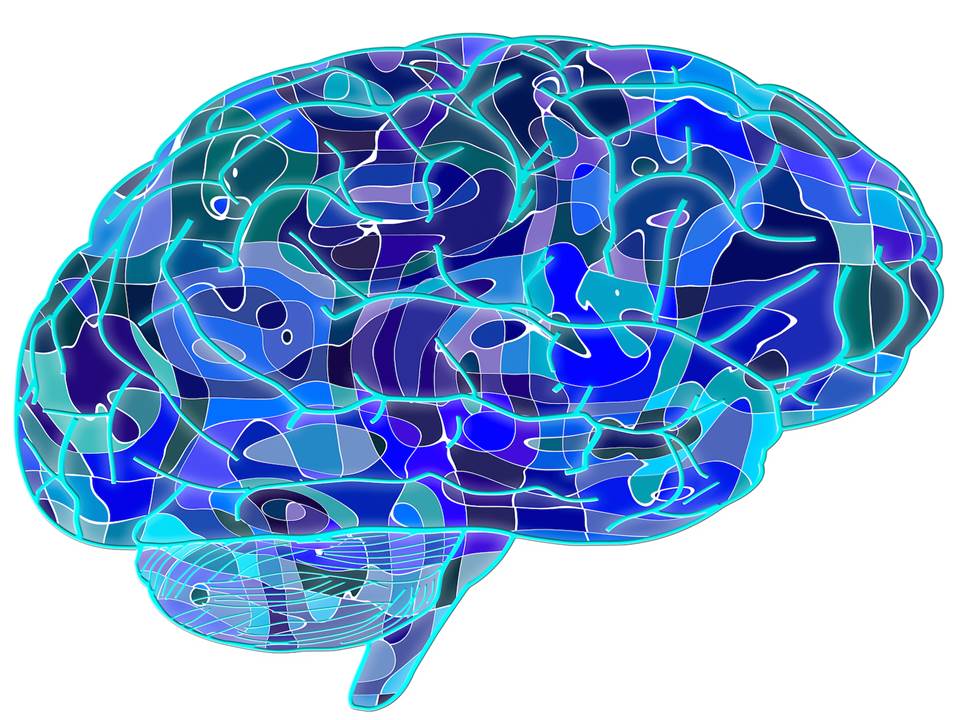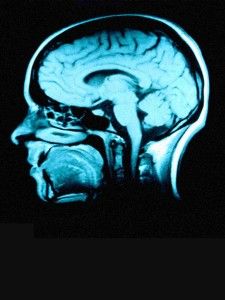Tag: Neuroregeneration – Page 2


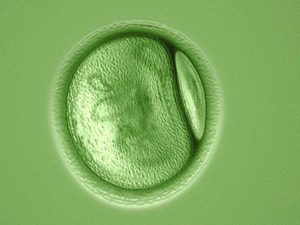


Revita Life Sciences Continues to Advance Multi-Modality Protocol in Attempt to Revive Brain Dead Subjects
Rudrapur, Uttrakhand, India — July 02, 2017
Revita Life Sciences, (http://revitalife.co.in) a biotechnology company focused on translational regenerative therapeutic applications, has announced that it is continuing to advance their novel, multi-modality clinical intervention in the state of brain death in humans.
“We have proactively continued to advance our multi-modality protocol, as an extended treatment before extubation, in an attempt to reverse the state of brain death” said Mr.Pranjal Agrawal, CEO Revita Life Sciences. “This treatment approach has yielded some very encouraging initial outcome signs, ranging from minor observations on blood pressure changes with response to painful stimuli, to eye opening and finger movements, with corresponding transient to permanent reversal changes in EEG patterns.”
This first exploratory study, entitled “Non-randomized, Open-labelled, Interventional, Single Group, and Proof of Concept Study with Multi-modality Approach in Cases of Brain Death Due to Traumatic Brain Injury Having Diffuse Axonal Injury” is ongoing at Anupam Hospital, Rudrapur, Uttrakhand. The intervention primarily involves intrathecal administration of minimal manipulated (processed at point of care) autologous stem cells derived from patient’s fat and bone marrow twice a week.
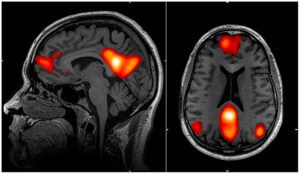
This study was inappropriately removed from the Indian Council of Medical Research (ICMR) database. ICMR has no regulatory oversight on such research in India.
The Central Drugs Standard Control Organization (CDSCO), Drug Controller General of India, had no objection to the program progressing. Regulatory approval as needed for new drugs, is currently not required when research is conducted on the recently deceased, although IRB and family consent is definitely required. CDSCO, the regulator of such studies, clearly states that “no regulatory requirements are needed for any study with minimal manipulated autologous stem cells in brain death subjects”.
Death is defined as the termination of all biological functions that sustain a living organism. Brain death, the complete and irreversible loss of brain function (including involuntary activity necessary to sustain life) as defined in the 1968 report of the Ad Hoc Committee of the Harvard Medical School, is the legal definition of human death in most countries around the world. Either directly through trauma, or indirectly through secondary disease indications, brain death is the final pathological state that over 60 million people globally transfer through each year.
“We are in process of publishing our initial retrospective results, as well ongoing early results, in a peer reviewed journal. These initial findings will prove invaluable to the future evolution of the program, as well as in progressing the development multi-modality regenerative therapeutics for the full range of the severe disorders of consciousness, including coma, PVS, the minimally conscious state, and a range of other degenerative CNS conditions in humans,” said Dr. Himanshu Bansal, Chief Scientific Officer, Revita Life Sciences and Director of Mother Cell.
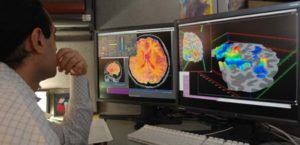
With the maturation of the tools of medical science in the 21st century, especially cell therapies and regenerative medicines, tissues once considered irretrievable, may finally be able to be revived or rejuvenated. Hence many scientists believe that brain death, as presently defined, may one day be reversed. While the very long term goal is to find a solution for “re-infusing life”, the short term purpose of these types of studies is much less dramatic, which is to confirm if the current definition of brain irreversibility still holds true. There have been many anecdotal reports of brain death reversal across the world over the past decades in the scientific literature. Studies of this nature serve to verify and establish this very fact in a scientific and controlled manner. It will also one day give a fair chance to individuals, who are declared brain dead, especially after trauma.
About Revita Life Sciences
Revita Life Sciences is a biotechnology company focused on the development of stem cell therapies and regenerative medicine interventions that target areas of significant unmet medical need. Revita is led by Dr. Himanshu Bansal MD, who has spent over two decades developing novel MRI based classifications of spinal cord injuries as well as comprehensive treatment protocols with autologous tissues including bone marrow stem cells, Dural nerve grafts, nasal olfactory tissues, and omental transposition.

Bioquark Inc. and RegenerAge SAPI de CV to Collaborate on Clinical Regenerative Healthcare
Philadelphia, PA, USA / Mexico City, Mexico — Bioquark, Inc., (www.bioquark.com) a life sciences company focused on the development of novel bioproducts for complex regeneration, disease reversion, and aging, and RegenerAge SAPI de CV, (www.regenerage.clinic/en/) a clinical company focused on translational therapeutic applications of a range of regenerative and rejuvenation healthcare interventions, have announced a collaboration to focus on novel combinatorial approaches in human disease and wellness. SGR-Especializada (http://www.sgr-especializada.com/), regulatory experts in the Latin American healthcare market, assisted in the relationship.
“We are very excited about this collaboration with RegenerAge SAPI de CV,” said Ira S. Pastor, CEO, Bioquark Inc. “The natural synergy of our cellular and biologic to applications of regenerative and rejuvenative medicine will make for novel and transformational opportunities in a range of degenerative disorders.”
As we close in on $7 trillion in total annual health care expenditures around the globe ($1 trillion spent on pharmaceutical products; $200 billion on new R&D), we are simultaneously witnessing a paradoxical rise in the prevalence of all chronic degenerative diseases responsible for human suffering and death.
With the emergence of such trends including: personalization of medicine on an “n-of-1” basis, adaptive clinical design, globalization of health care training, compassionate use legislative initiatives for experimental therapies, wider acceptance of complementary medical technologies, and the growth of international medical travel, patients and clinicians are more than ever before, exploring the ability to access the therapies of tomorrow, today.
The estimate of the current market size for procedural medical travel, defined by medical travelers who travel across international borders for the purpose of receiving medical care, is in the range of US $40–55 billion.
Additionally, major clinical trial gaps currently exist across all therapeutic segments that are responsible for human suffering and death. Cancer is one prime example. As a leading cause of morbidity and mortality worldwide for many decades, today there are approximately 14 million new cases diagnosed each year, with over 8 million cancer related deaths annually. It is estimated that less than 5% of these patients, take the initiative to participate in any available clinical studies.
“We look forward to working closely with Bioquark Inc. on this exciting initiative,” said Dr. Joel Osorio, Chief of Clinical Development RegenerAge SAPI de CV. “The ability to merge cellular and biologic approaches represents the next step in achieving comprehensive regeneration and disease reversion events in a range of chronic diseases responsible for human suffering and death.”
About Bioquark, Inc.
Bioquark Inc. is focused on the development of natural biologic based products, services, and technologies, with the goal of curing a wide range of diseases, as well as effecting complex regeneration. Bioquark is developing both biological pharmaceutical candidates, as well as products for the global consumer health and wellness market segments.
About RegenerAge SAPI de CV
RegenerAge SAPI de CV is a novel clinical company focused on translational therapeutic applications, as well as expedited, experimental access for “no option” patients, to a novel range of regenerative and reparative biomedical products and services, with the goal of reducing human degeneration, suffering, and death.

Bioquark Inc. and Revita Life Sciences Receive IRB Approval for First-In-Human Brain Death Study
Bioquark, Inc., (http://www.bioquark.com) a company focused on the development of novel biologics for complex regeneration and disease reversion, and Revita Life Sciences, (http://revitalife.co.in) a biotechnology company focused on translational therapeutic applications of autologous stem cells, have announced that they have received IRB approval for a study focusing on a novel combinatorial approach to clinical intervention in the state of brain death in humans.
This first trial, within the portfolio of Bioquark’s Reanima Project (http://www.reanima.tech) is entitled “Non-randomized, Open-labeled, Interventional, Single Group, Proof of Concept Study With Multi-modality Approach in Cases of Brain Death Due to Traumatic Brain Injury Having Diffuse Axonal Injury” (https://clinicaltrials.gov/ct2/show/NCT02742857?term=bioquark&rank=1), will enroll an initial 20 subjects, and be conducted at Anupam Hospital in Rudrapur, Uttarakhand India.
“We are very excited about the approval of our protocol,” said Ira S. Pastor, CEO, Bioquark Inc. “With the convergence of the disciplines of regenerative biology, cognitive neuroscience, and clinical resuscitation, we are poised to delve into an area of scientific understanding previously inaccessible with existing technologies.”
Death is defined as the termination of all biological functions that sustain a living organism. Brain death, the complete and irreversible loss of brain function (including involuntary activity necessary to sustain life) as defined in the 1968 report of the Ad Hoc Committee of the Harvard Medical School, is the legal definition of human death in most countries around the world. Either directly through trauma, or indirectly through secondary disease indications, brain death is the final pathological state that over 60 million people globally transfer through each year.
While human beings lack substantial regenerative capabilities in the CNS, many non-human species, such as amphibians, planarians, and certain fish, can repair, regenerate and remodel substantial portions of their brain and brain stem even after critical life-threatening trauma.
Additionally, recent studies on complex brain regeneration in these organisms, have highlighted unique findings in relation to the storage of memories following destruction of the entire brain, which may have wide ranging implications for our understanding of consciousness and the stability of memory persistence.
“Through our study, we will gain unique insights into the state of human brain death, which will have important connections to future therapeutic development for other severe disorders of consciousness, such as coma, and the vegetative and minimally conscious states, as well as a range of degenerative CNS conditions, including Alzheimer’s and Parkinson’s disease,” said Dr. Sergei Paylian, Founder, President, and Chief Science Officer of Bioquark Inc.
Over the years, clinical science has focused heavily on preventing such life and death transitions and made some initial progress with suspended animation technologies, such as therapeutic hypothermia. However, once humans transition through the brain death window, currently defined by the medical establishment as “irreversible”, they are technically no longer alive, despite the fact that human bodies can still circulate blood, digest food, excrete waste, balance hormones, grow, sexually mature, heal wounds, spike a fever, and gestate and deliver a baby. It is even acknowledged by thought leaders that recently brain dead humans still may have residual blood flow and electrical nests of activity in their brains, just not enough to allow for an integrated functioning of the organism as a whole.
“We look forward to working closely with Bioquark Inc. on this cutting edge clinical initiative,” said Dr. Himanshu Bansal, Managing Director of Revita Life Sciences.
About Bioquark, Inc.
Bioquark Inc. is focused on the development of natural biologic based products, services, and technologies, with the goal of curing a wide range of diseases, as well as effecting complex regeneration. Bioquark is developing both biological pharmaceutical candidates, as well as products for the global consumer health and wellness market segments.
About Revita Life Sciences
Revita Life Sciences is a biotechnology company focused on the development of stem cell therapies that target areas of significant unmet medical need. Revita is led by Dr. Himanshu Bansal MD, PhD. who has spent over two decades developing novel MRI based classifications of spinal cord injuries as well as comprehensive treatment protocols with autologous tissues including bone marrow stem cells, dural nerve grafts, nasal olfactory tissues, and omental transposition.

Death Reversal — The Reanima Project — Research Whose Time Has Come
I have spent the last 30 years in various aspects of the biopharmaceutical industry, which for the most part has been a very rewarding experience.
However, during this time period, having been immersed many different components of therapeutic development and commercialization, one thing has always bothered me: a wide array of promising research never makes it off the bench to see the translational light of day, and gets lost in the historical scientific archives.
I always believed that scientific progress happened in a very linear narrative, with each new discovery supporting the next, resulting ultimately in an eventual stairway of scientific enlightenment.
What the reality turned out to be was much more of a fragmented, research “evolutionary tree”, with dozens of potential pathways, only very few branches of which ever resulted in scientific maturity, and not always the most fruitful ones by any means.
The premature extinction of these promising discovery pathways were the result of a variety of factors, including, but not limited to, funding priorities, competing industrial interests, “out of vogue” concepts, lack of intellectual properties, non-existent regulatory models, conflicted legislative initiatives, and even religious implications.
In 2016, as in previous years, we continue to see these “valleys of death” swallow up pathways of scientific possibility, with few popular segments attracting the majority of attention and support.
The preponderance of resources focused on the somatic mutation model of carcinogenesis, despite an endless range of research highlighting that the disease is extremely heterogenic and rarely ever follows such a clonal model, is one example that continues to be inappropriately manifested in the oncology system, decades into the “war on cancer”.
On a similar plane, the jettisoning of most studies of the biophysical aspects of human genetics, despite the gross incompleteness offered by the central dogma to explain higher biological form and function, is another example that has become all too pervasive in the research community.
And then there are the areas of human consciousness, memory, and information processing / storage, where in many ways we are still operating in the dark ages, with materialists and dualists battling it out for centuries.
One topic that I have written quite a bit about is that of death, specifically that of the death of the human brain — http://www.singularityweblog.com/is-death-reversible/
While I am a staunch supporter and advocate of the life-extension / anti-aging movement, I am equally vocal about our need to develop technologies, products, and services that can actually reverse our ultimate transition between the living and dead states, a transition that occurs annually for 60 million humans around the globe.
Death, however, is unfortunately seen by many as a natural, biological progression for human beings, and in many circles, deemed an unnecessary area of scientific research and exploration.
I beg to differ.
Far too often, death arrives too early and too unexpectedly for many of us and our loved ones. And the best modern medicine has to offer today is “Sorry. There is nothing else we can do.”
But what if there was?
There are a variety of species across the natural world that are capable of regenerating and repairing themselves from forms of severe CNS damage that bring them to the transitional grey zone between life and death. Along the evolutionary timeline however, this ability gradually disappeared hundreds of millions of years ago and does not manifest in higher species.
Now, in the 21st century, with the convergence of the disciplines of regenerative biology, cognitive neuroscience, and clinical resuscitation, we may finally be poised to take back these capabilities for humans.
Over the years, clinical science has focused heavily on preventing such life and death transitions and made some initial progress with suspended animation technologies, such as therapeutic hypothermia. But once we transition through the brain death window, currently defined by the medical establishment as “irreversible” (per the 1968 Ad Hoc Committee of the Harvard Medical School definition), we are technically no longer alive.
To add insult to injury, a human can be declared dead, even while our bodies can still circulate blood, digest food, excrete waste, balance hormones, grow, sexually mature, heal wounds, spike a fever, and gestate and deliver a baby. It is even acknowledged by thought leaders that recently brain dead humans still may have residual blood flow and electrical nests of activity in their brains, just not enough to allow for an integrated functioning of the organism as a whole.
Several prominent cases in the media over the past few years have further served to highlight the current situation, as well as the substantial anatomical and functional differences between the state known as brain death, and other severe disorders of consciousness, such as coma, and the vegetative and minimally conscious states.
It is now time to take the necessary steps to provide new possibilities of hope, in order to counter the pain, sorrow, and grief that is all too pervasive in the world when we experience a loved one’s unexpected or untimely death, due to lesions which might be potentially reversible with the application of promising neuro-regeneration and neuro-reanimation technologies and therapies.
It is time to undertake the required research, based on 2016 technological knowledge, in order to bring about such transformational change.
My name is Ira S. Pastor and I am the CEO of the biotechnology company Bioquark Inc.
Welcome to the unveiling of the Reanima project.
Mapping the Mind to Merge with Machines: Experimental Research Approaches to Brain Computer Interfaces (BCIs)
The historical context in which Brain Computer Interfaces (BCI) has emerged has been addressed in a previous article called “To Interface the Future: Interacting More Intimately with Information” (Kraemer, 2011). This review addresses the methods that have formed current BCI knowledge, the directions in which it is heading and the emerging risks and benefits from it. Why neural stem cells can help establish better BCI integration is also addressed as is the overall mapping of where various cognitive activities occur and how a future BCI could potentially provide direct input to the brain instead of only receive and process information from it.
EEG Origins of Thought Pattern Recognition
Early BCI work to study cognition and memory involved implanting electrodes into rats’ hippocampus and recording its EEG patterns in very specific circumstances while exploring a track both when awake and sleeping (Foster & Wilson, 2006; Tran, 2012). Later some of these patterns are replayed by the rat in reverse chronological order indicating a retrieval of the memory both when awake and asleep (Foster & Wilson, 2006). Dr. John Chapin shows that the thoughts of movement can be written to a rat to then remotely control the rat (Birhard, 1999; Chapin, 2008).
A few human paraplegics have volunteered for somewhat similar electrode implants into their brains for an enhanced BrainGate2 hardware and software device to use as a primary data input device (UPI, 2012; Hochberg et al., 2012). Clinical trials of an implanted BCI are underway with BrainGate2 Neural Interface System (BrainGate, 2012; Tran, 2012). Currently, the integration of the electrodes into the brain or peripheral nervous system can be somewhat slow and incomplete (Grill et al., 2001). Nevertheless, research to optimize the electro-stimulation patterns and voltage levels in the electrodes, combining cell cultures and neurotrophic factors into the electrode and enhance “endogenous pattern generators” through rehabilitative exercises are likely to improve the integration closer to full functional restoration in prostheses (Grill et al., 2001) and improved functionality in other BCI as well.
When integrating neuro-chips to the peripheral nervous system for artificial limbs or even directly to the cerebral sensorimotor cortex as has been done for some military veterans, neural stem cells would likely help heal the damage to the site of the limb lost and speed up the rate at which the neuro-chip is integrated into the innervating tissue (Grill et al., 2001; Park, Teng, & Snyder, 2002). These neural stem cells are better known for their natural regenerative ability and it would also generate this benefit in re-establishing the effectiveness of the damaged original neural connections (Grill et al., 2001).
Neurochemistry and Neurotransmitters to be Mapped via Genomics
Cognition is electrochemical and thus the electrodes only tell part of the story. The chemicals are more clearly coded for by specific genes. Jaak Panksepp is breeding one line of rats that are particularly prone to joy and social interaction and another that tends towards sadness and a more solitary behavior (Tran, 2012). He asserts that emotions emerged from genetic causes (Panksepp, 1992; Tran, 2012) and plans to genome sequence members of both lines to then determine the genomic causes of or correlations between these core dispositions (Tran, 2012). Such causes are quite likely to apply to humans as similar or homologous genes in the human genome are likely to be present. Candidate chemicals like dopamine and serotonin may be confirmed genetically, new neurochemicals may be identified or both. It is a promising long-term study and large databases of human genomes accompanied by medical histories of each individual genome could result in similar discoveries. A private study of the medical and genomic records of the population of Iceland is underway and has in the last 1o years has made unique genetic diagnostic tests for increased risk of type 2 diabetes, breast cancer prostate cancer, glaucoma, high cholesterol/hypertension and atrial fibrillation and a personal genomic testing service for these genetic factors (deCODE, 2012; Weber, 2002). By breeding 2 lines of rats based on whether they display a joyful behavior or not, the lines of mice should likewise have uniquely different genetic markers in their respective populations (Tran, 2012).
fMRI and fNIRIS Studies to Map the Flow of Thoughts into a Connectome
Though EEG-based BCI have been effective in translating movement intentionality of the cerebral motor cortex for neuroprostheses or movement of a computer cursor or other directional or navigational device, it has not advanced the understanding of the underlying processes of other types or modes of cognition or experience (NPG, 2010; Wolpaw, 2010). The use of functional Magnetic Resonance Imaging (fMRI) machines, and functional Near-Infrared Spectroscopy (fNIRIS) and sometimes Positron Emission Tomography (PET) scans for literally deeper insights into the functioning of brain metabolism and thus neural activity has increased in order to determine the relationships or connections of regions of the brain now known collectively as the connectome (Wolpaw, 2010).
Dr. Read Montague explained broadly how his team had several fMRI centers around the world linked to each other across the Internet so that various economic games could be played and the regional specific brain activity of all the participant players of these games can be recorded in real time at each step of the game (Montague, 2012). In the publication on this fMRI experiment, it shows the interaction between baseline suspicion in the amygdala and the ongoing evaluation of the specific situation that may increase or degree that suspicion which occurred in the parahippocampal gyrus (Bhatt et al., 2012). Since the fMRI equipment is very large, immobile and expensive, it cannot be used in many situations (Solovey et al., 2012). To essentially substitute for the fMRI, the fNIRS was developed which can be worn on the head and is far more convenient than the traditional full body fMRI scanner that requires a sedentary or prone position to work (Solovey et al., 2012).
In a study of people multitasking on the computer with the fNIRIS head-mounted device called Brainput, the Brainput device worked with remotely controlled robots that would automatically modify the behavior of 2 remotely controlled robots when Brainput detected an information overload in the multitasking brains of the human navigating both of the robots simultaneously over several differently designed terrains (Solovey et al., 2012).
Writing Electromagnetic Information to the Brain?
These 2 examples of the Human Connectome Project lead by the National Institute of Health (NIH) in the US and also underway in other countries show how early the mapping of brain region interaction is for higher cognitive functions beyond sensory motor interactions. Nevertheless, one Canadian neurosurgeon has taken volunteers for an early example of writing some electromagnetic input into the human brain to induce paranormal kinds of subjective experience and has been doing so since 1987 (Cotton, 1996; Nickell, 2005; Persinger, 2012). Dr. Michael Persinger uses small electrical signals across the temporal lobes in an environment with partial audio-visual isolation to reduce neural distraction (Persinger, 2003). These microtesla magnetic fields especially when applied to the right hemisphere of the temporal lobes often induced a sense of an “other” presence generally described as supernatural in origin by the volunteers (Persinger, 2003). This early example shows how input can be received directly by the brain as well as recorded from it.
Higher Resolution Recording of Neural Data
Electrodes from EEGs and electromagnets from fMRI and fNIRIS still record or send data at the macro level of entire regions or areas of the brain. Work on intracellular recording such as the nanotube transistor allows for better understanding at the level of neurons (Gao et al., 2012). Of course, when introducing micro scale recording or transmitting equipment into the human brain, safety is a major issue. Some progress has been made in that an ingestible microchip called the Raisin has been made that can transmit information gathered during its voyage through the digestive system (Kessel, 2009). Dr. Robert Freitas has designed many nanoscale devices such as Respirocytes, Clottocytes and Microbivores to replace or augment red blood cells, platelets and phagocytes respectively that can in principle be fabricated and do appear to meet the miniaturization and propulsion requirements necessary to get into the bloodstream and arrive at the targeted system they are programmed to reach (Freitas, 1998; Freitas, 2000; Freitas, 2005; Freitas, 2006).
The primary obstacle is the tremendous gap between assembling at the microscopic level and the molecular level. Dr. Richard Feynman described the crux of this struggle to bridge the divide between atoms in his now famous talk given on December 29, 1959 called “There’s Plenty of Room at the Bottom” (Feynman, 1959). To encourage progress towards the ultimate goal of molecular manufacturing by enabling theoretical and experimental work, the Foresight Institute has awarded annual Feynman Prizes every year since 1997 for contribution in this field called nanotechnology (Foresight, 2012).
The Current State of the Art and Science of Brain Computer Interfaces
Many neuroscientists think that cellular or even atomic level resolution is probably necessary to understand and certainly to interface with the brain at the level of conceptual thought, memory storage and retrieval (Ptolemy, 2009; Koene, 2010) but at this early stage of the Human Connectome Project this evaluation is quite preliminary. The convergence of noninvasive brain scanning technology with implantable devices among volunteer patients supplemented with neural stem cells and neurotrophic factors to facilitate the melding of biological and artificial intelligence will allow for many medical benefits for paraplegics at first and later to others such as intelligence analysts, soldiers and civilians.
Some scientists and experts in Artificial Intelligence (AI) express the concern that AI software is on track to exceed human biological intelligence before the middle of the century such as Ben Goertzel, Ray Kurzweil, Kevin Warwick, Stephen Hawking, Nick Bostrom, Peter Diamandis, Dean Kamen and Hugo de Garis (Bostrom, 2009; de Garis, 2009, Ptolemy, 2009). The need for fully functioning BCIs that integrate the higher order conceptual thinking, memory recall and imagination into cybernetic environments gains ever more urgency if we consider the existential risk to the long-term survival of the human species or the eventual natural descendent of that species. This call for an intimate and fully integrated BCI then acts as a shield against the possible emergence of an AI independently of us as a life form and thus a possible rival and intellectually superior threat to the human heritage and dominance on this planet and its immediate solar system vicinity.
References
Bhatt MA, Lohrenz TM, Camerer CF, Montague PR. (2012). Distinct contributions of the amygdala and parahippocampal gyrus to suspicion in a repeated bargaining game. Proc. Nat’l Acad. Sci. USA, 109(22):8728–8733. Retrieved October 15, 2012, from http://www.ncbi.nlm.nih.gov/pmc/articles/PMC3365181/pdf/pnas.201200738.pdf.
Birhard, K. (1999). The science of haptics gets in touch with prosthetics. The Lancet, 354(9172), 52–52. Retrieved from http://search.proquest.com/docview/199023500
Bostrom, N. (2009). When Will Computers Be Smarter Than Us? Forbes Magazine. Retrieved October 19, 2012, from http://www.forbes.com/2009/06/18/superintelligence-humanity-oxford-opinions-contributors-artificial-intelligence-09-bostrom.html.
BrainGate. (2012). BrainGate — Clinical Trials. Retrieved October 15, 2012, from http://www.braingate2.org/clinicalTrials.asp.
Chapin, J. (2008). Robo Rat — The Brain/Machine Interface [Video]. Retrieved October 19, 2012, from https://www.youtube.com/watch?v=-EvOlJp5KIY.
Cotton, I. (1997, 96). Dr. persinger’s god machine. Free Inquiry, 17, 47–51. Retrieved from http://search.proquest.com/docview/230100330.
de Garis, H. (2009, June 22). The Coming Artilect War. Forbes Magazine. Retrieved October 19, 2012, from http://www.forbes.com/2009/06/18/cosmist–terran-cyborgist-opinions-contributors-artificial-intelligence-09-hugo-de-garis.html.
deCODE genetics. (2012). deCODE genetics – Products. Retrieved October 26, 2012, from http://www.decode.com/products.
Feynman, R. (1959, December 29). There’s Plenty of Room at the Bottom, An Invitation to Enter a New Field of Physics. Caltech Engineering and Science. 23(5)22–36. Retrieved October 17, 2012, from http://calteches.library.caltech.edu/47/2/1960Bottom.pdf.
Foresight Institute. (2012). FI sponsored prizes & awards. Retrieved October 17, 2012, from http://www.foresight.org/FI/fi_spons.html.
Foster, D. J., & Wilson, M. A. (2006). Reverse replay of behavioural sequences in hippocampal place cells during the awake state. Nature, 440(7084), 680–3. doi: 10.1038/nature04587.
Freitas, R. (1998). Exploratory Design in Medical Nanotechnology: A Mechanical Artificial Red Cell, Artificial Cells, Blood Substitutes, and Immobil. Biotech.26(1998):411–430. Retrieved October 15, 2012, from http://www.foresight.org/Nanomedicine/Respirocytes.html.
Freitas, R. (2000, June 30). Clottocytes: Artificial Mechanical Platelets,” Foresight Update (41)9–11. Retrieved October 15, 2012, from http://www.imm.org/publications/reports/rep018.
Freitas, R. (2005. April). Microbivores: Artificial Mechanical Phagocytes using Digest and Discharge Protocol. J. Evol. Technol. (14)55–106. Retrieved October 15, 2012, from http://www.jetpress.org/volume14/freitas.pdf.
Freitas, R. (2006. September). Pharmacytes: An Ideal Vehicle for Targeted Drug Delivery. J. Nanosci. Nanotechnol. (6)2769–2775. Retrieved October 15, 2012, from http://www.nanomedicine.com/Papers/JNNPharm06.pdf.
Gao, R., Strehle, S., Tian, B., Cohen-Karni, T. Xie, P., Duan, X., Qing, Q., & Lieber, C.M. (2012). “Outside looking in: Nanotube transistor intracellular sensors” Nano Letters. 12(3329−3333). Retrieved September 7, 2012, from http://cmliris.harvard.edu/assets/NanoLet12-3329_RGao.pdf.
Grill, W., McDonald, J., Peckham, P., Heetderks, W., Kocsis, J., & Weinrich, M. (2001). At the interface: convergence of neural regeneration and neural prostheses for restoration of function. Journal Of Rehabilitation Research & Development, 38(6), 633–639.
Hochberg, L. R., Bacher, D., Jarosiewicz, B., Masse, N. Y., Simeral, J. D., Vogel, J., Donoghue, J. P. (2012). Reach and grasp by people with tetraplegia using a neurally controlled robotic arm. Nature, 485(7398), 372–5. Retrieved from http://search.proquest.com/docview/1017604144.
Kessel, A. (2009, June 8). Proteus Ingestible Microchip Hits Clinical Trials. Retrieved October 15, 2012, from http://singularityhub.com/2009/06/08/proteus–ingestible-microchip-hits-clinical-trials.
Koene, R.A. (2010). Whole Brain Emulation: Issues of scope and resolution, and the need for new methods of in-vivo recording. Presented at the Third Conference on Artificial General Intelligence (AGI2010). March, 2010. Lugano, Switzerland. Retrieved August 29, 2010, from http://rak.minduploading.org/publications/publications/koene…=0&d=1.
Kraemer, W. (2011, December). To Interface the Future: Interacting More Intimately with Information. Journal of Geoethical Nanotechnology. 6(2). Retrieved December 27, 2011, from http://www.terasemjournals.com/GNJournal/GN0602/kraemer.html.
Montague, R. (2012, June). What we’re learning from 5,000 brains. Retrieved October 15, 2012, from http://video.ted.com/talk/podcast/2012G/None/ReadMontague_2012G-480p.mp4.
Nature Publishing Group (NPG). (2010, December). A critical look at connectomics. Nature Neuroscience. p. 1441. doi:10.1038/nn1210-1441.
Nickell, J. (2005, September). Mystical experiences: Magnetic fields or suggestibility? The Skeptical Inquirer, 29, 14–15. Retrieved from http://search.proquest.com/docview/219355830
Panksepp, J. (1992). A Critical Role for “Affective Neuroscience” in Resolving What Is Basic About Basic Emotions. 99(3)554–560. Retrieved October 14, 2012, from http://www.communicationcache.com/uploads/1/0/8/8/10887248/a…otions.pdf.
Park, K. I., Teng, Y. D., & Snyder, E. Y. (2002). The injured brain interacts reciprocally with neural stem cells supported by scaffolds to reconstitute lost tissue. Nature Biotechnology, 20(11), 1111–7. doi: 10.1038/nbt751.
Persinger, M. (2003). The Sensed Presence Within Experimental Settings: Implications for the Male and Female Concept of Self. Journal of Psychology. (137)1.5–16. Retrieved October October 14, 2012, from http://search.proquest.com/docview/213833884.
Persinger, M. (2012). Dr. Michael A. Persinger. Retrieved October 27, 2012, from http://142.51.14.12/Laurentian/Home/Departments/Behavioural+Neuroscience/People/Persinger.htm?Laurentian_Lang=en-CA
Ptolemy, R. (Producer & Director). (2009). Transcendent Man [Film]. Los Angeles: Ptolemaic Productions, Therapy Studios.
Solovey, E., Schermerhorn, P., Scheutz, M., Sassaroli, A., Fantini, S. & Jacob, R. (2012). Brainput: Enhancing Interactive Systems with Streaming fNIRS Brain Input. Retrieved August 5, 2012, from http://web.mit.edu/erinsol/www/papers/Solovey.CHI.2012.Final.pdf.
Tran, F. (Director). (2012). Dream Life of Rats [Video]. Retrieved ?September ?21, ?2012, from http://www.hulu.com/watch/388493.
UPI. (2012, May 31). People with paralysis control robotic arms to reach and grasp using brain computer interface. UPI Space Daily. Retrieved from http://search.proquest.com/docview/1018542919
Weber, J. L. (2002). The iceland map. Nature Genetics, 31(3), 225–6. doi: http://dx.doi.org/10.1038/ng920
Wolpaw, J. (2010, November). Brain-computer interface research comes of age: traditional assumptions meet emerging realities. Journal of Motor Behavior. 42(6)351–353. Retrieved September 10, 2012, from http://www.tandfonline.com/doi/pdf/10.1080/00222895.2010.526471.

